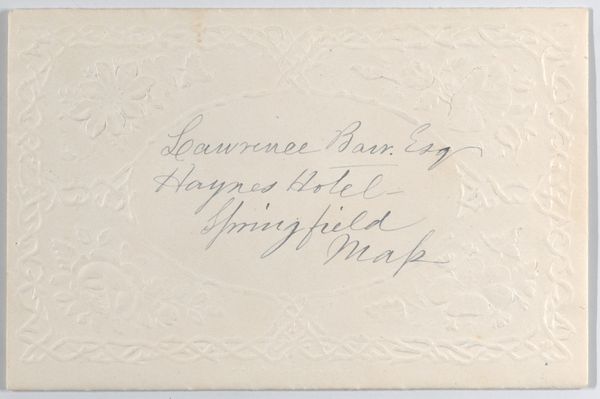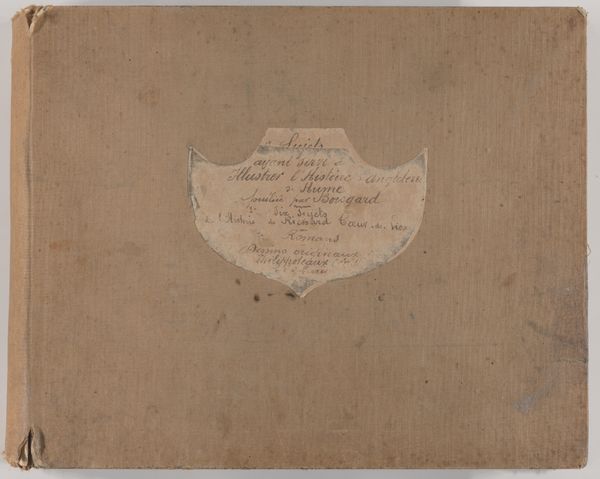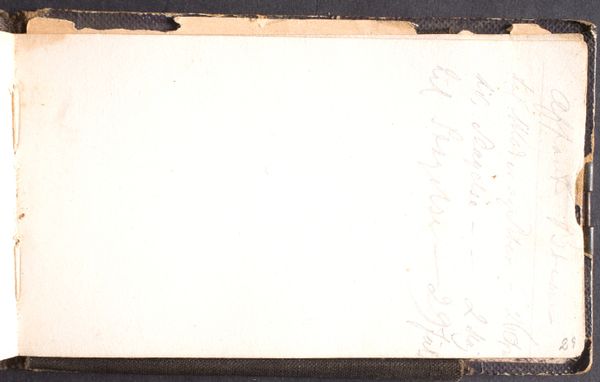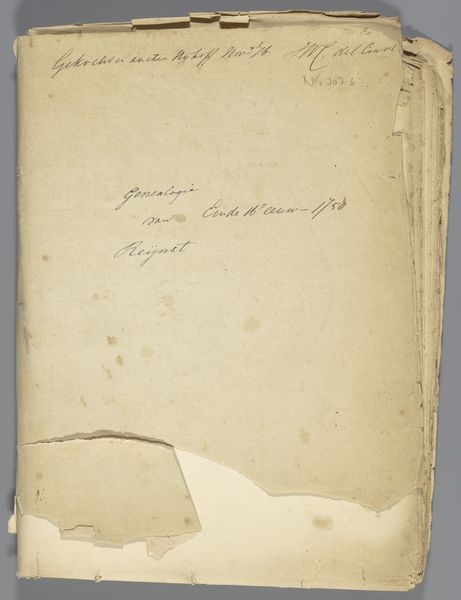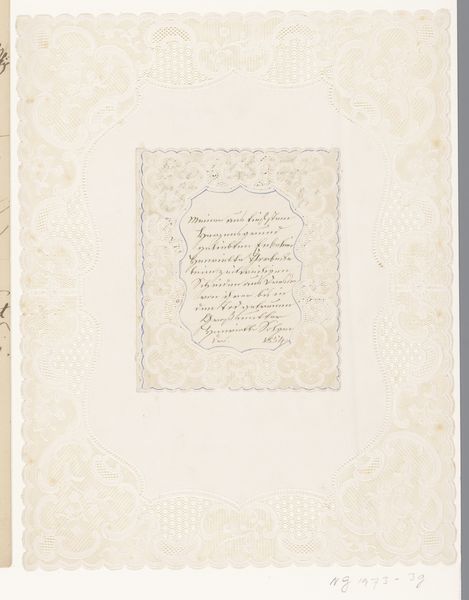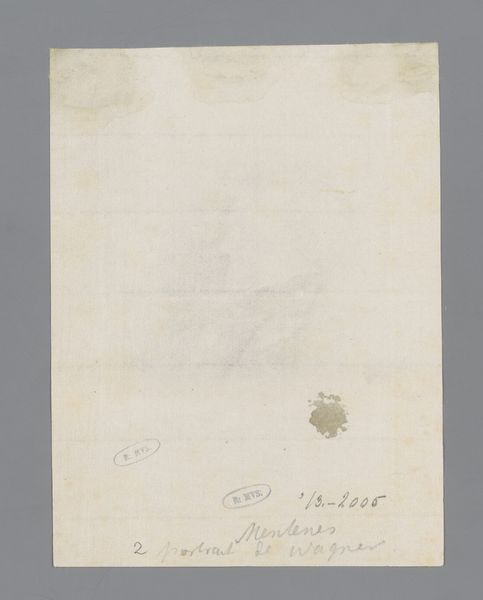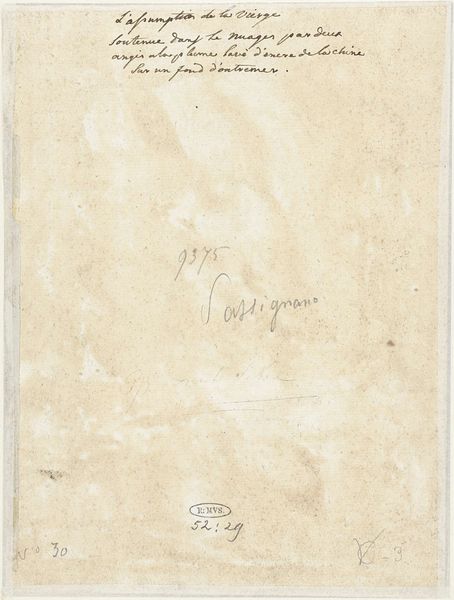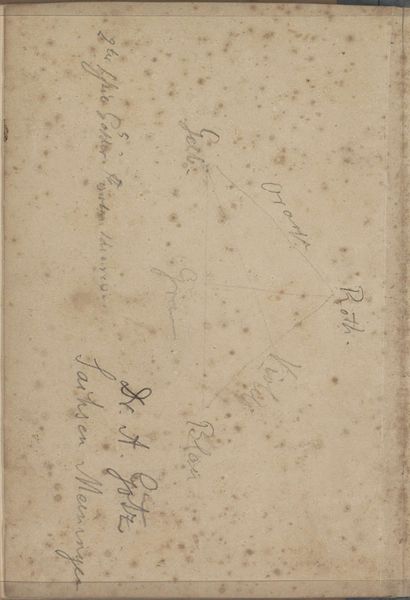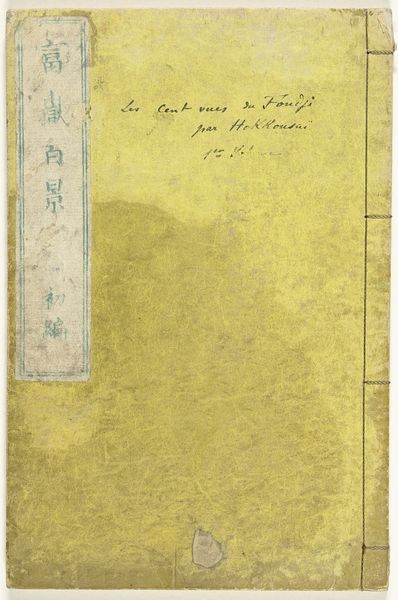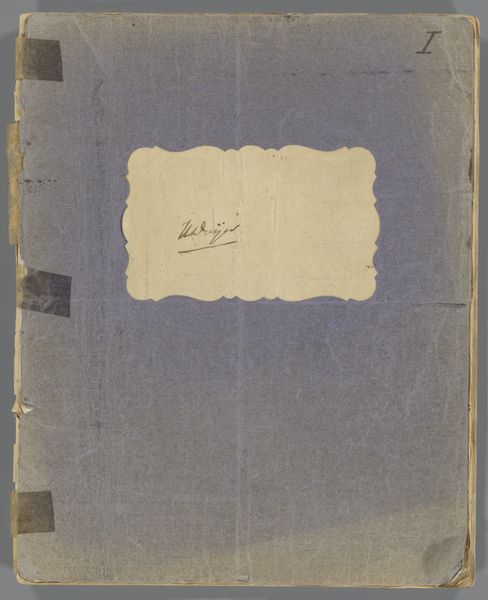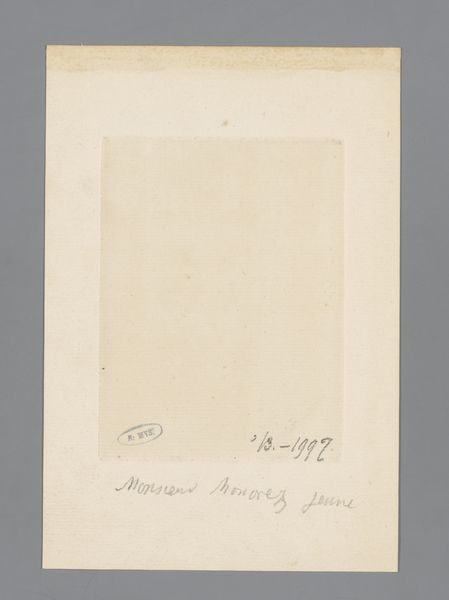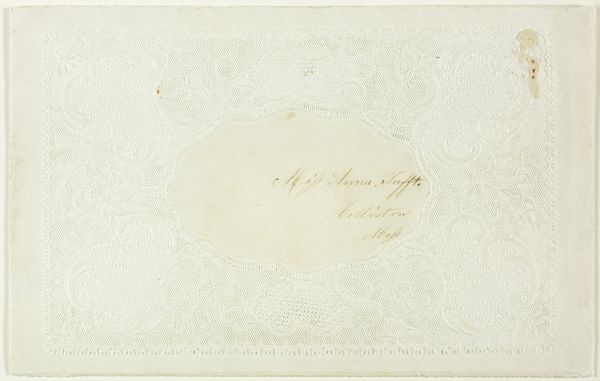
drawing, print, paper
#
drawing
# print
#
paper
#
decorative-art
Dimensions: Width: 4 3/4 in. (12.1 cm) Length: 7 1/16 in. (18 cm)
Copyright: Public Domain
Curator: This decorative piece, dating from around 1860, is simply titled "Valentine." It's held here at the Metropolitan Museum of Art. It appears to be a print or drawing on paper of some kind. My first impression is how delicate it feels. Editor: It has a haunting quality too, wouldn't you say? It looks almost bleached, with these barely discernible shapes, flowers, perhaps animals—as if a dream is trying to materialize. And I'm immediately thinking about the laborious process behind creating something so intricately textured on paper in that era. What were the conditions like? Was it a skilled artisan, or was it a piecework by poorer hands for the rising merchant class? Curator: The visual language of Victorian valentines is steeped in symbolism. The embossed patterns we see framing the central text panel are no accident. Every motif would have carried specific, intended meanings regarding courtship, affection, even social standing. What’s most compelling is the way these emblems tap into universal desires for connection and enduring love. Editor: Absolutely, but how did this mass production intersect with Victorian ideals of craft and authenticity? Was it perceived as an object of genuine emotion, or as a mere commodity within a rapidly changing economy? The embossed effect is lovely, yes, but I can't help thinking of the die-cut technology needed for replication, for popular consumption, where something special becomes generic. Curator: Perhaps both could be true. This valentine presents itself as a token of sincere emotion precisely because it uses this established visual shorthand. The motifs were already laden with meaning and, in a sense, pre-packaged emotion. People used established systems and recognized symbols, so as not to invent any new visual form. What we see may be cliché now, but once carried genuine significance. Editor: It's true, its survival also gives us a glimpse into material culture of that era, and prompts consideration for what types of emotions, ideas, desires could actually be exchanged via paper. Thank you for offering those insights! Curator: My pleasure! I never really appreciated all of this nuance when considering materials alone.
Comments
No comments
Be the first to comment and join the conversation on the ultimate creative platform.
